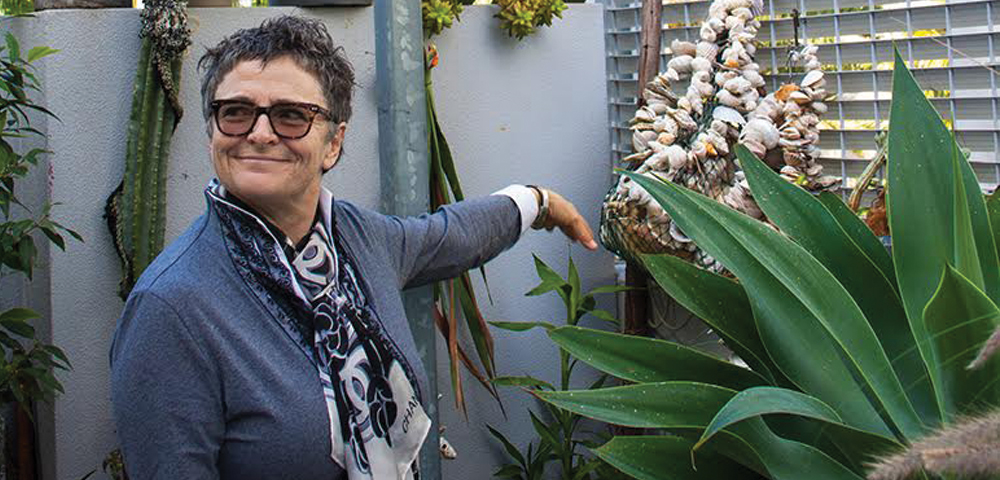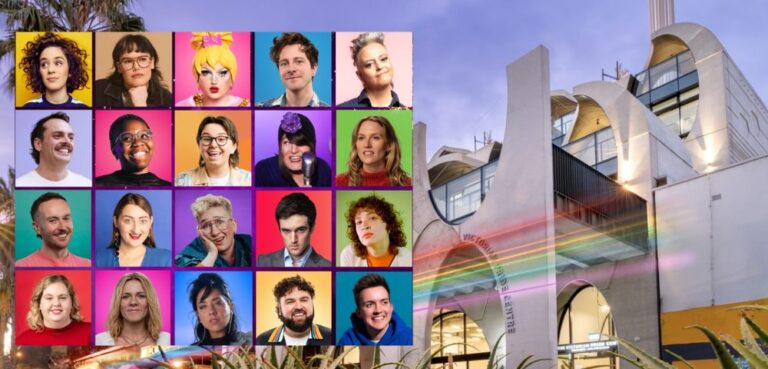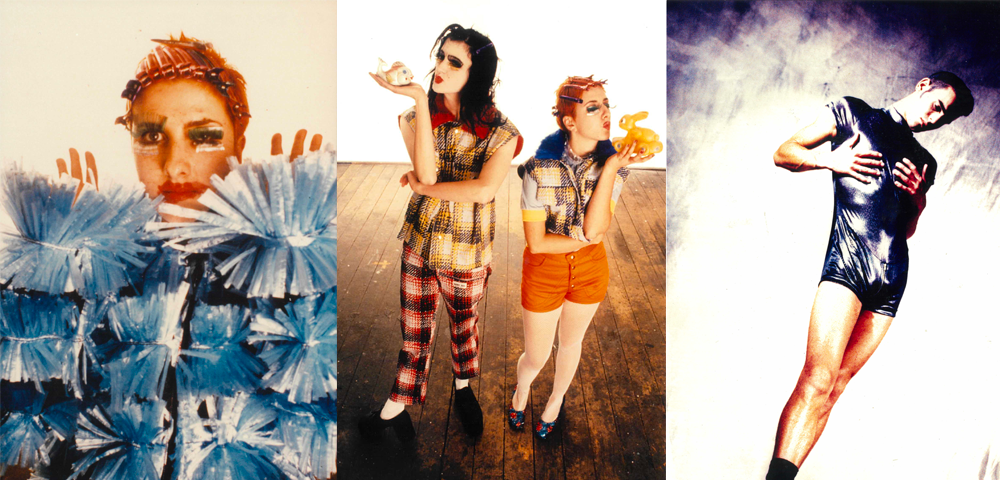
Community Hero: C.Moore Hardy

SUPERMARKETS aren’t generally known for their monumental works of art.
Which is why the floor-to-ceiling photograph of a Mardi Gras float, towering as it does above the bagged salads and tomatoes in a Sydney Woolworths store, is so striking.
[showads ad=MREC]The picture pays homage to the site’s former role as the parade’s workshop.
The photographer is C.Moore Hardy who has been documenting Sydney, and in particular the LGBTI scene, for more than three decades.
“The piece in Woolies in Erskineville is in the building that the photograph was taken,” she says.
“That’s what makes it so interesting.
“To have an image that talks about community without being a photo of a person is inspiring in a way.”
Hardy’s work has spanned rock concerts and protest rallies, Patrick White to Midnight Oil. It’s been published in newspapers, exhibited in galleries, graced billboards and is now stored in the City of Sydney, NSW State Library and Australian Lesbian and Gay Archives.
She has worked with scene publications, including the Star Observer (its first issue in 1979 sported a front cover image by Hardy), and has given her time and skills to community organisations including the NSW Gay and Lesbian Rights Lobby, Sydney Pride Centre, ACON and Gay Games.
“My wish was to document the community and make sure we had a visual history because that’s the thing we didn’t have,” she says.
However, there were other drivers.
“You know, I’m a natural pervert,” Hardy laughs.
“I’ve always enjoyed looking at other people and what they’re doing.”
She was careful not to take advantage, though.
“I knew my boundaries,” she says.
“I took a lot of photos of politicians and high court judges. They didn’t want to be outed, they just enjoyed being part of the community and I respected that.”

Asked to name one of her favourite images of gay Sydney, Hardy doesn’t hesitate: “Village People, all in pink at 6am, Sleaze Ball.”
Hardy was born in Darlinghurst, just metres from Oxford St, with her love of photography coming from her father who gave his young daughter a camera as a gift.
“It was the thing that parents did in those days, you gave the kids a box Brownie.”
Hardy’s aptitude for photography led her to art school but to make ends meet she also took up nursing.
Both professions have featured heavily in her working life. After years focusing purely on photography she has returned to nursing part-time, specialising in palliative care.
Hardy says a common thread connects the two.
“Nursing is about observing people,” she says.
“I was able to read body language very early on, an inbuilt intuition I suppose, and photography — particularly social documentary — is about timing because you almost have to anticipate what’s going to happen and be in the right spot.”
In her early 30s, after “a lot of boyfriends”, Hardy came out and her attention turned towards the gay community.
By the early 1980s it was a community at once celebrating the legalisation of homosexuality while suffering under the trauma of HIV and AIDS.
“Guys used to try and stay alive just for the next Mardi Gras, then they’d die a week later at the hospice,” she recalls.
Hardy remembers them as “really beautiful but also incredibly devastating” times.
“The beauty was in the fact that people got together to create things in memorial and they were a stronger community,” she says.
As her career progressed, Hardy realised there was no shortage of snappers taking pictures of gay men. So, her lens became drawn to the minorities within the LGBTI community – trans* people, Indigenous community members and lesbians.
“The kind of images I was looking for were really positive images of women, empowering pictures and devious pictures,” she says.
It’s been a constant theme in Hardy’s work with an exhibition she curated at the Australian Centre for Photography last year, We Are Family, exclusively featuring lesbian photographers.
“There are so few exhibitions about women’s work and this was about women’s perspective about their families within the [LGBTI] community,” she reflects.
Next February, Hardy takes over Sydney’s Brenda May Gallery to exhibit what she describes as a mini retrospective of her best work.
There’s also the kernel of an idea forming of a book, created with other photographers, dedicated to lesbian representation.
The modern obsession of recording every facet of life on social media doesn’t faze Hardy — indeed she uses both Instagram and Facebook several times a day.
She draws the line at pictures of food and shirtless selfies, calling the former obnoxious and the latter narcissistic.
“I’m not interested in ‘I’ve got a fucking fabulous body, look at me’, that is just dead boring,” she says.
“I’m much more interested in people and seeing their relationships, whether they’ve got family, good friends around them, whether they are doing something in the community.”
What does Hardy feel her contribution to Sydney’s LGBTI community has been?
“I don’t know if I’ve moved the cause forward,” she says.
“I just know I’ve been there, at certain times, to document those moments where we’ve tried to push to get equality.”
Do you know of an unsung community hero who deserves recognition? Email editor@starobserver.com.au with your tip.
RELATED: Community Hero — Jamie Gardiner
RELATED: Community Hero — Yvonne Gardner
_____________
**This article was first published in the September edition of the Star Observer, which is available to read in digital flip-book format. To obtain a physical copy, click here to find out where you can grab one in Melbourne, Sydney, Brisbane, Adelaide, Canberra and select regional/coastal areas.
[showads ad=FOOT]









